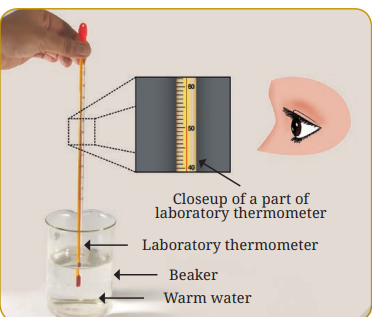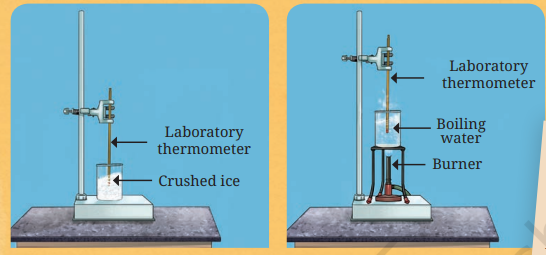Class 6 Science Chapter 7 Temperature and its Measurement Notes: FREE PDF Download
FAQs on Temperature and its Measurement Class 6 Notes: CBSE Science Chapter 7
1. What is the importance of measuring temperature?
Temperature measurement helps us know how hot or cold an object is. It is used in daily life, healthcare, and scientific experiments to ensure accuracy, safety, and health.
2. What is the difference between a clinical and a laboratory thermometer?
A clinical thermometer is used to measure body temperature, while a laboratory thermometer is used to measure a wider range of temperatures in scientific experiments.
3. Why should we not hold a thermometer by the bulb while measuring temperature?
Holding a thermometer by the bulb can affect the temperature reading, as the heat from your hand may transfer to the thermometer and give an inaccurate result.
4. Can we use a laboratory thermometer to measure body temperature?
No, laboratory thermometers are not suitable for measuring body temperature because they are designed for measuring higher or lower temperatures, unlike clinical thermometers.
5. What is the normal body temperature in Celsius?
The normal body temperature is around 37°C, but it can vary slightly depending on the person and their activity.
6. How do we read the temperature correctly on a laboratory thermometer?
To read the temperature correctly, the thermometer should be held vertically, and the eye should be aligned with the top of the liquid column for an accurate reading.
7. Why does the temperature of boiling water remain constant?
When water boils, it remains at a constant temperature because the heat energy is used to change the state of the water from liquid to gas, rather than raising its temperature.
8. How can temperature be measured beyond the range of a clinical thermometer?
To measure temperatures beyond the range of a clinical thermometer, laboratory thermometers or digital thermometers with a higher range should be used.
9. Why is mercury used in thermometers?
Mercury is used in thermometers because it expands uniformly with temperature changes, making it easier to get accurate temperature readings. It is also visible inside the thermometer tube.
10. What precautions should be taken while using a laboratory thermometer?
While using a laboratory thermometer, avoid holding it by the bulb, handle it gently to prevent breakage, and ensure the bulb is fully immersed in the liquid being measured without touching the sides or bottom of the container.
11. Can a clinical thermometer be used to measure the temperature of boiling water?
No, a clinical thermometer cannot measure the temperature of boiling water because its range is limited to body temperatures, usually between 35°C to 42°C.
12. What is the Celsius scale and how is it used in temperature measurement?
The Celsius scale is a temperature scale where water freezes at 0°C and boils at 100°C. It is commonly used for everyday temperature measurements, especially in weather forecasts and healthcare.
13. How does the digital thermometer work?
A digital thermometer uses heat sensors to measure body temperature and displays the reading on a digital screen. It is safer and more accurate than traditional mercury thermometers.




















